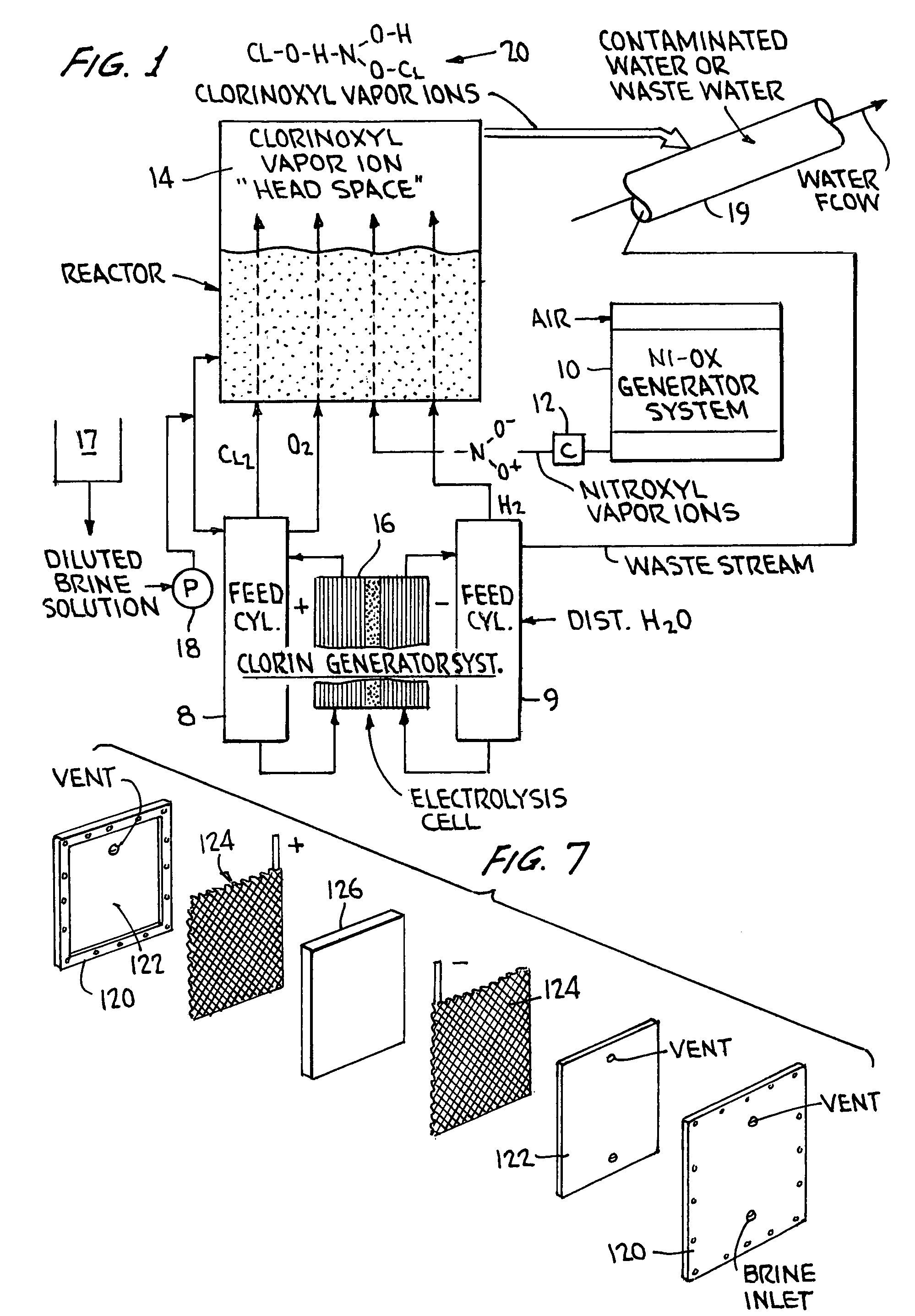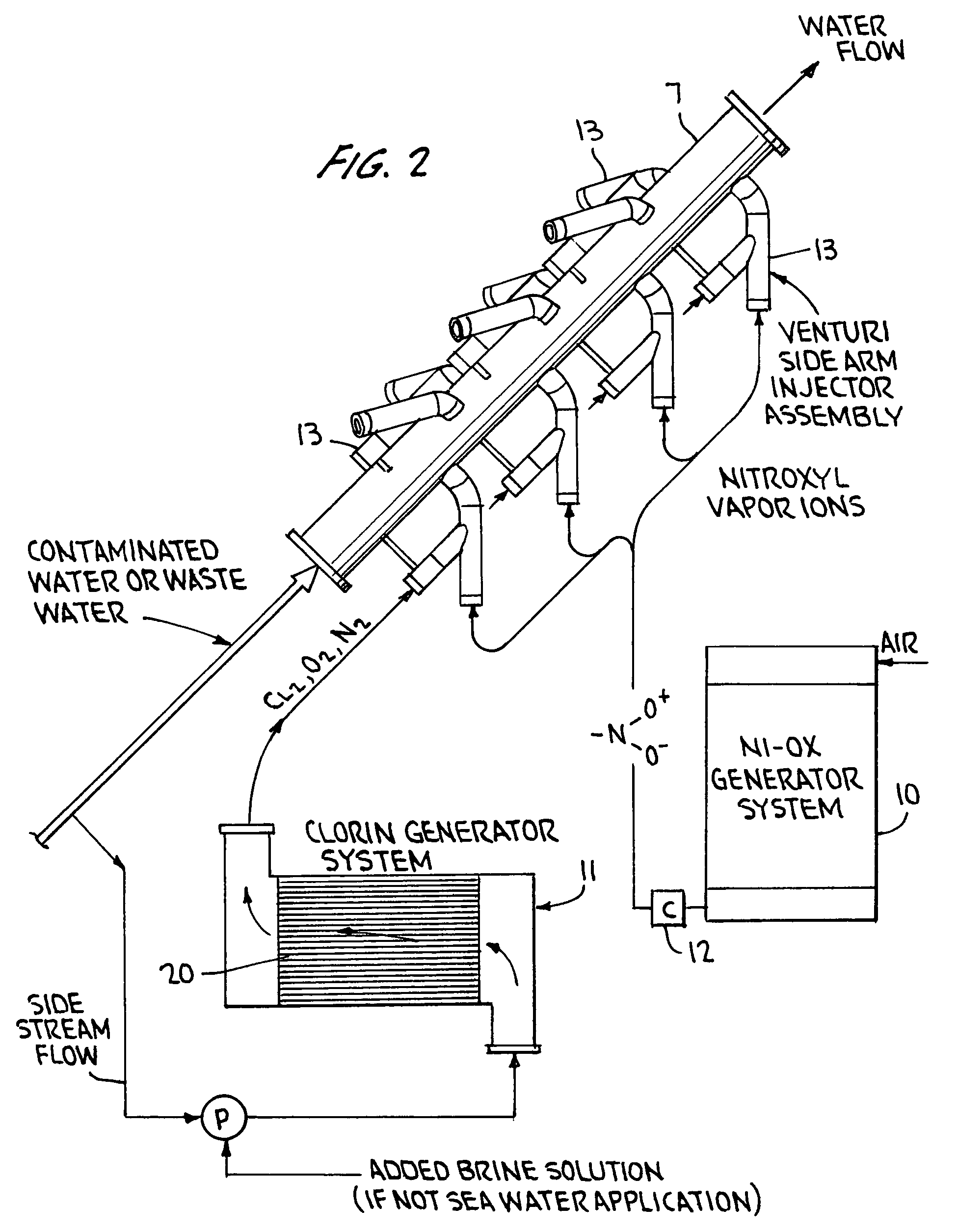Non-chemical water treatment method and apparatus employing ionized air purification technologies
a technology of ionized air and water treatment method, which is applied in the direction of grey water treatment, chemical/physical/physical-chemical processes based on energy, sedimentation settling tanks, etc., can solve the problems of high maintenance cost, inordinate replacement cost and down time, and high cost. , to achieve the effect of low maintenance and low energy cos
- Summary
- Abstract
- Description
- Claims
- Application Information
AI Technical Summary
Benefits of technology
Problems solved by technology
Method used
Image
Examples
Embodiment Construction
[0046]As indicated above, the essential principle of the water treatment methods and apparatus provided according to the invention is to provide essentially complete destruction of biological contaminants, that is, microorganisms of all types, such as parasites, bacteria, fungi, viruses, and algae, followed by their removal from the water stream, coupled with separation and removal of non-biological contaminants as may be present.
[0047]As set forth in applicant's prior patents referred to above, the biological destruction process is accomplished principally by providing streams of ionized gas atoms and molecules; according to the present invention, these are chiefly various highly reactive ionic species of oxygen, chlorine and nitrogen. Ionized oxygen and nitrogen of various species are produced by exposing a stream of air to intense ultraviolet (UV) radiation, and in some cases to an electric field; ionized chlorine, along with additional ionized oxygen and hydrogen, is produced by...
PUM
 Login to View More
Login to View More Abstract
Description
Claims
Application Information
 Login to View More
Login to View More - R&D
- Intellectual Property
- Life Sciences
- Materials
- Tech Scout
- Unparalleled Data Quality
- Higher Quality Content
- 60% Fewer Hallucinations
Browse by: Latest US Patents, China's latest patents, Technical Efficacy Thesaurus, Application Domain, Technology Topic, Popular Technical Reports.
© 2025 PatSnap. All rights reserved.Legal|Privacy policy|Modern Slavery Act Transparency Statement|Sitemap|About US| Contact US: help@patsnap.com



